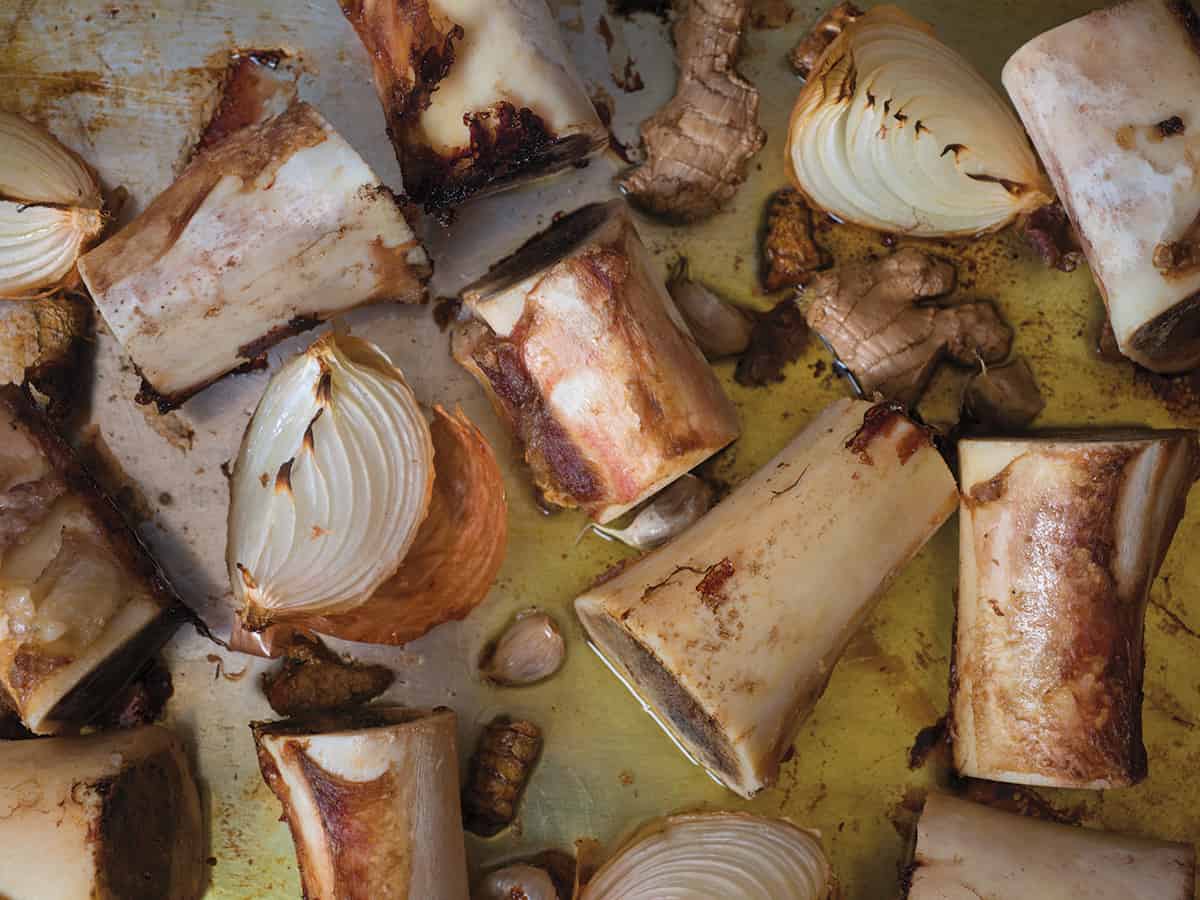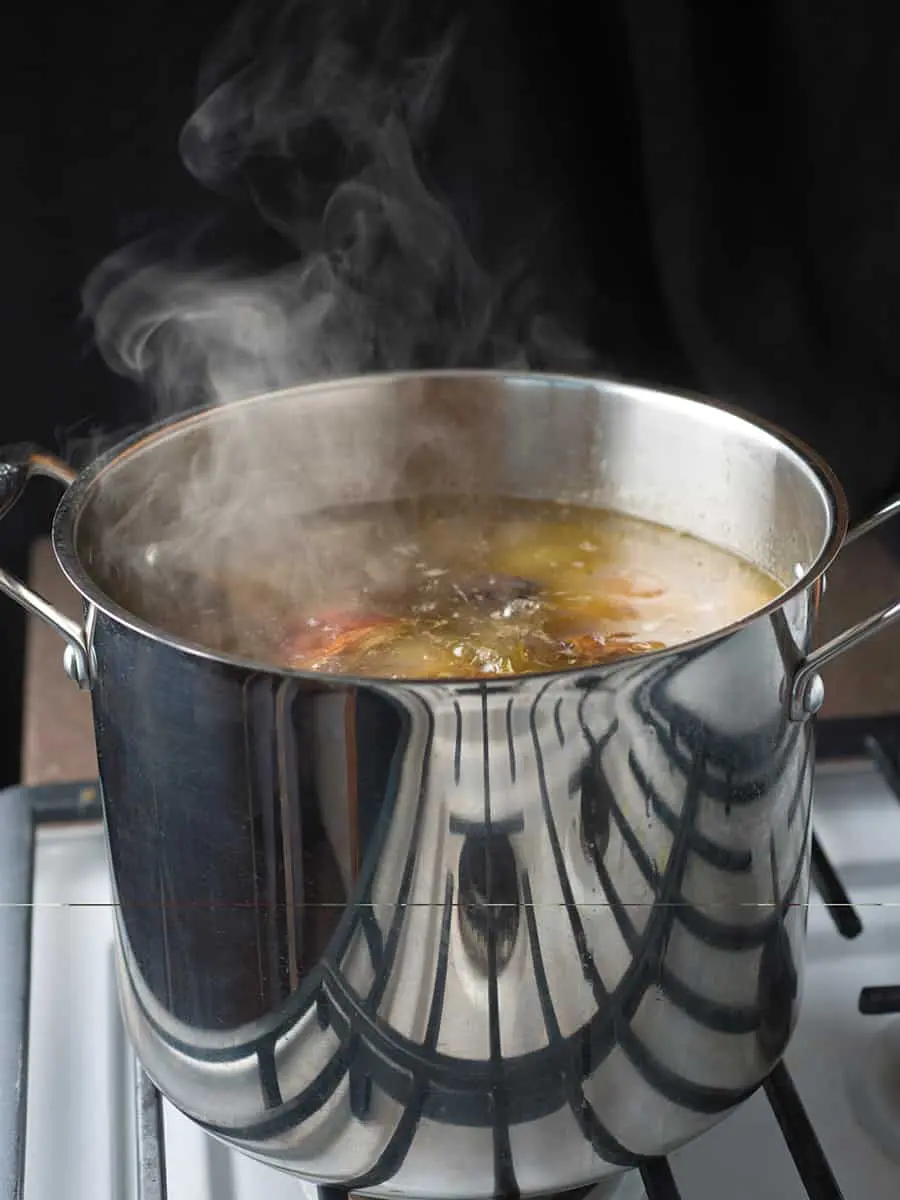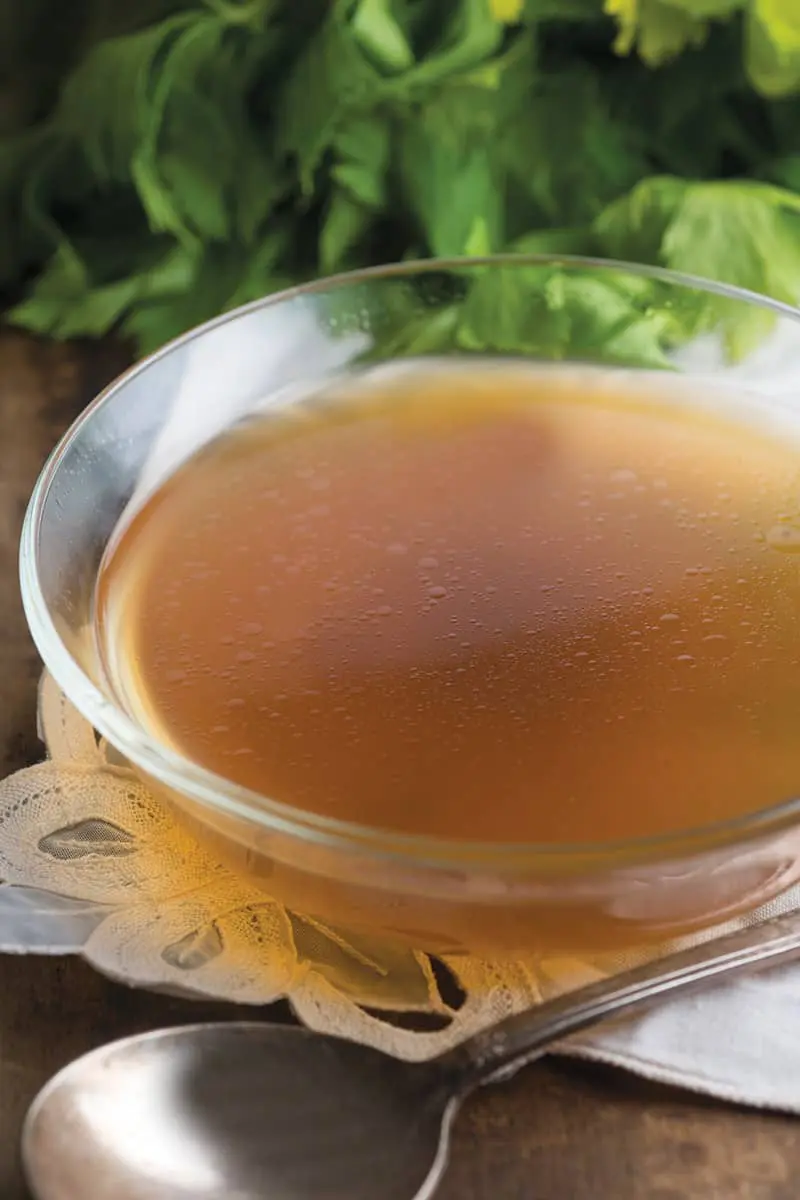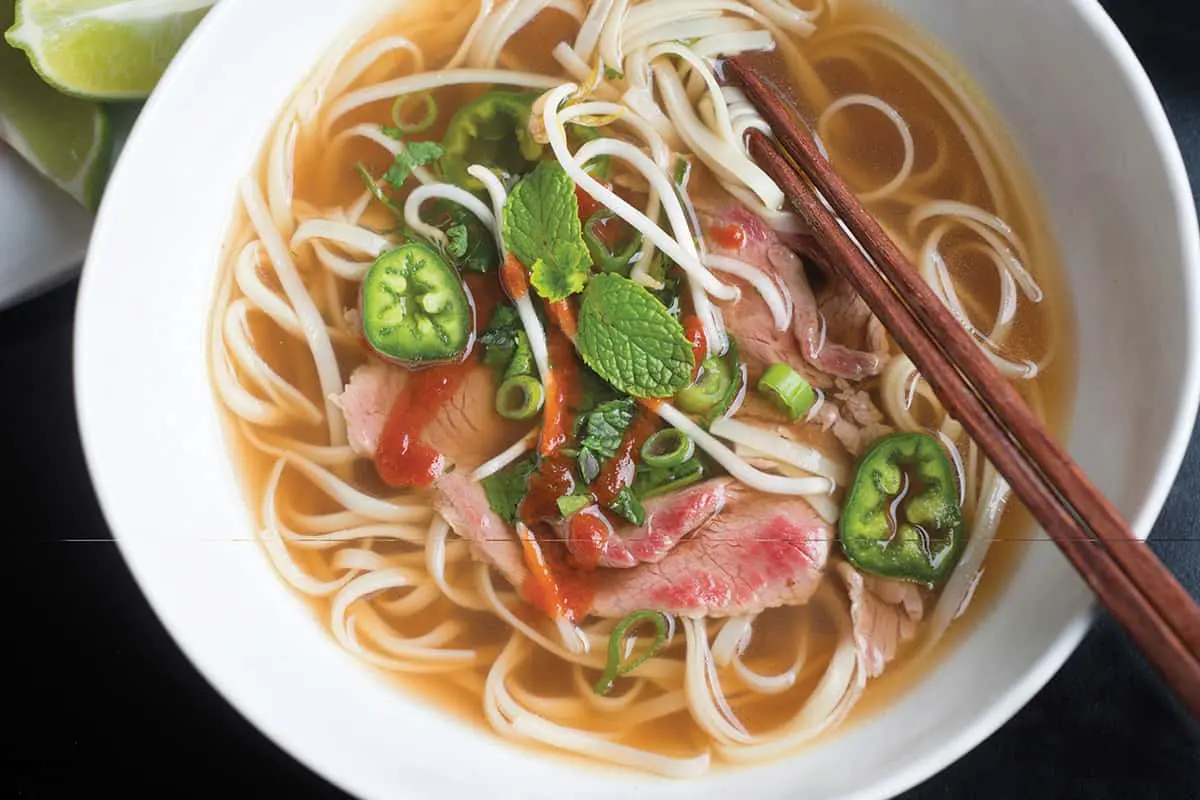By Annie Fenn, MD
Photographs by Paulette Phlipot
–
Remember when your grandmother tossed bones into a pot, added vegetable scraps and water, and simmered it on the back burner all day long? She probably called it “stock,” but nowadays, it’s the hottest new health trend: bone broth. I doubt your grandmother sipped her stock from a cup throughout the day, but that’s what many bone broth enthusiasts are doing now—as a sports recovery drink, as a substitute for afternoon tea, and as the ultimate health elixir.
So, what exactly is the difference between bone broth and stock?
Most chefs and dietitians agree that bone broth is just stock that has been simmered anywhere from twelve to forty-eight hours. This long cooking process breaks down the bones, releasing the nutrients, minerals, and gelatin from the marrow, making it easily digestible.
Now, no one denies that homemade broth is a nutritious, comforting food, but does it live up to all its purported health claims—as a bone-building, anti-inflammatory, immunity-boosting elixir?
Well, bones contain collagen, which is essential for healthy joints and beautiful skin. But after a long simmer on the stove, collagen breaks down into amino acids. So, while the broth may not actually smooth your wrinkles, the amino acids still provide the building blocks for muscle and many other bodily tissues. Also, according to a study published in the medical journal CHEST, chicken broth, specifically, has the ability to bolster your immune system. “Chicken soup may contain a number of substances with beneficial medicinal activity,” the study states, such as reducing inflammation of the upper respiratory system during a viral infection. We already knew that, right? Still, studies are lacking for bone broth’s ability to help athletes recover from intense workouts, even though dietitians claim it is an excellent restorative drink full of amino acids and electrolytes.
Health gains aside, having a bone broth recipe in your repertoire provides a perfect go-to ingredient for many dishes and also makes for a good use of scraps. Plus, a long-simmered broth made from scratch is bound to have benefits beyond what science can measure.
I have a few simple techniques for making homemade broth. First, and most importantly, find great bones with marrow. In the marrow are vitamins and minerals that, when given enough time, will seep into the broth; but it’s also where toxins reside. So, source beef and pork bones from local ranchers who raise animals humanely, poultry bones from farmers who let their animals forage, and bones from your last wild game hunt (if you’re a hunter). Once you’ve gathered the ingredients, roast the bones and the aromatics (onions, garlic, herbs) in the oven until caramelized. Next, never boil your bone broth! Instead, bring it up slowly to just below a simmer. And lastly, (yet less importantly) skim the scummy foam that forms on top during the first hour of cooking.
Here’s the hardest part—determining the cooking time often depends on how much time you’ve got. You can make a delicious and nutritious soup from broth that has simmered five to six hours. But if you can wait it out—more than twelve and up to forty-eight hours—you’ll reap additional benefits. My broth making typically begins in the morning and finishes after supper; I have yet to do the forty-eight-hour marathon.
Basic Beef Bone Broth
—
Makes approximately 8 quarts
—
For both nutritional purpose and taste, seek out bones from grass-fed, pastured cows or organically raised bison.
5 pounds bones with marrow
2 yellow onions, unpeeled, cut into quarters
6 cloves garlic, unpeeled
6 carrots, unpeeled, cut into 6-inch pieces
6 ribs celery, cut into 6-inch pieces
2 bay leaves
12 black peppercorns
1 teaspoon kosher salt
1 tablespoon apple cider vinegar
1. Preheat oven to 400º F. Wash and dry the vegetables. Place the bones, onions, and garlic on a rimmed baking sheet. Bake for 1 hour, until browned and caramelized.
2. Scrape the contents of the baking sheet, including the crispy bits, into a large stockpot. Add remaining ingredients and cover with 8 quarts cold water.
3. Bring broth to just below a simmer; do not boil. Adjust heat until bubbles slowly rise to the surface. Simmer on stovetop, or in the oven (at about 250º F), or in a large crockpot for a minimum of 6 hours and as long as 48. Skim the foam as needed.
4. As broth reduces, add water to keep contents submerged.
5. Remove and discard the bones. Strain broth through a fine mesh sieve and into a large pot. Let cool to room temperature, cover, and refrigerate. Skim fat and portion into airtight containers.
6. Store in the refrigerator for up to 5 days or in the freezer for up to 6 months.
Turmeric Ginger Pho Bo
—
Serves 4
—
This rendition of traditional Vietnamese pho uses turmeric, a potent anti-inflammatory that researchers claim helps prevent sicknesses
from Alzheimer’s disease to the common cold.
For the pho broth:
5 pounds beef or bison bones with marrow
1 large yellow onion, unpeeled, cut into quarters
3 2-inch pieces ginger, unpeeled
1 handful turmeric root, unpeeled
5 cloves garlic, unpeeled
1 1/2 teaspoons kosher salt
1/2 teaspoon ground white pepper
1 cinnamon stick
2 pods star anise
2 whole cloves
1/4 cup fish sauce
1 tablespoon light brown sugar
—
For the toppings:
1 pound wild game tenderloin, beef sirloin, or round steaks, grilled or slightly seared, and cut into thin slices
16 ounces rice noodles or rice sticks, prepared according
to package
3 scallions, thinly sliced
1/2 cup cilantro, chopped
1/2 cup mint leaves, torn
1/2 cup basil leaves, torn
2 cups mung bean sprouts
2 limes, cut into wedges
2 jalapeños, stemmed and thinly sliced into rings
Sriracha hot sauce (optional)
Beef fat (optional)
Make the pho broth:
1.Preheat oven to 400º F. Wash and dry the onion, ginger, turmeric, and garlic. Place on a rimmed baking sheet with the bones. Bake for 1 hour, until browned and caramelized.
2. Scrape contents into a large stockpot, including the crispy bits, and cover with 6 quarts of cold water.
3. Bring broth to just below a simmer; do not boil. Adjust heat until bubbles slowly rise to the surface. Simmer for 3 hours. Skim foam as needed.
4. As the broth reduces, add water to keep contents submerged.
5. Add salt, white pepper, cinnamon, star anise, and cloves. Continue cooking for 1 to 2 hours.
6. Add fish sauce and brown sugar. Remove from heat and cool slightly.
7. Remove and discard the bones. Strain broth through a fine mesh sieve and into a large pot. Let cool to room temperature, cover, and refrigerate. Skim fat and discard or set aside for pho.
Assemble the pho:
1. Return broth to simmer and warm the serving bowls in the oven. Season the broth with brown sugar or fish sauce, as desired.
2. Prepare the noodles and the toppings, as directed.
3. Fill bowls with a handful of noodles, cover with hot broth, and allow guests to choose their toppings. Drizzle with Sriracha and stir in fat, if desired.





